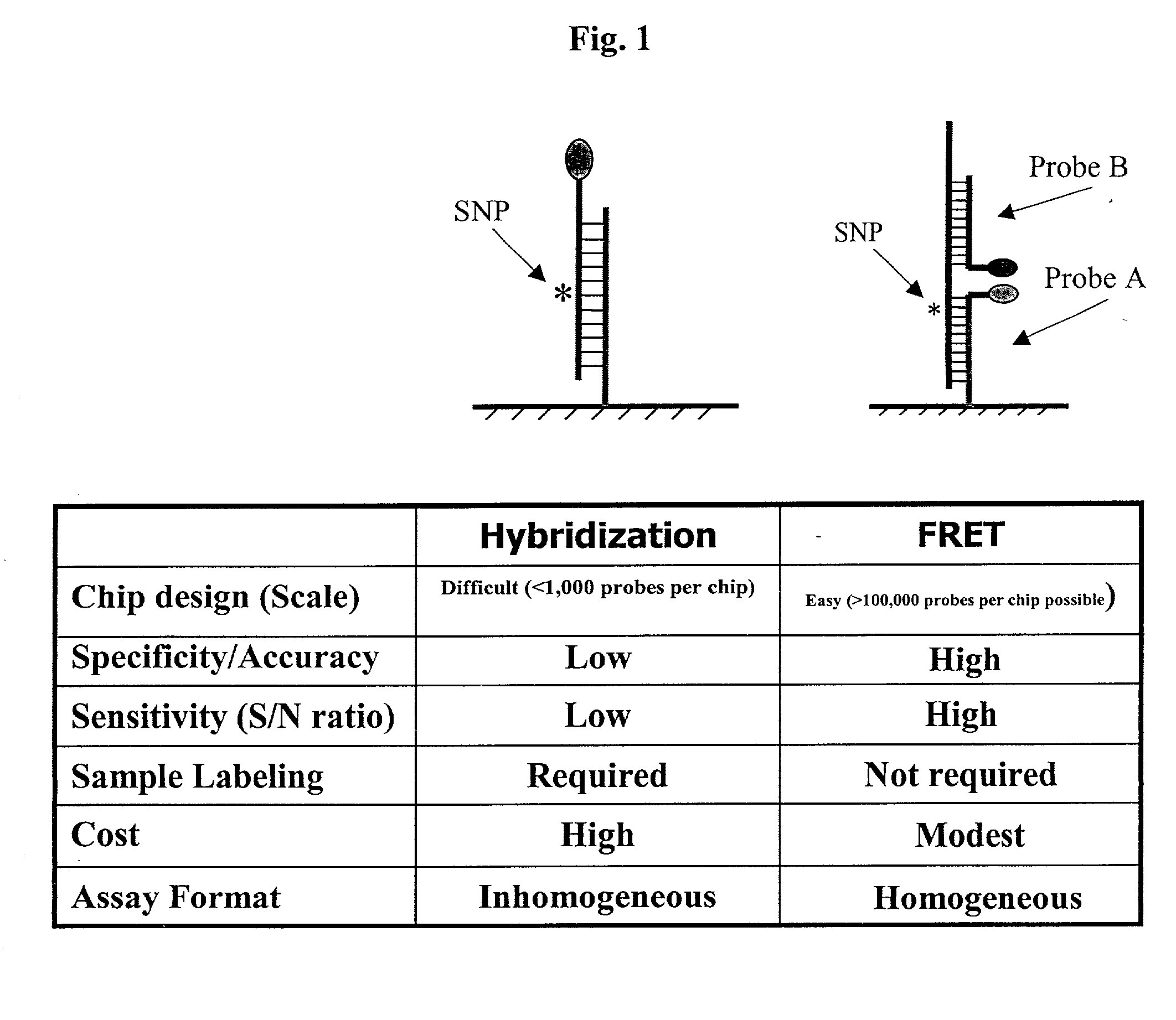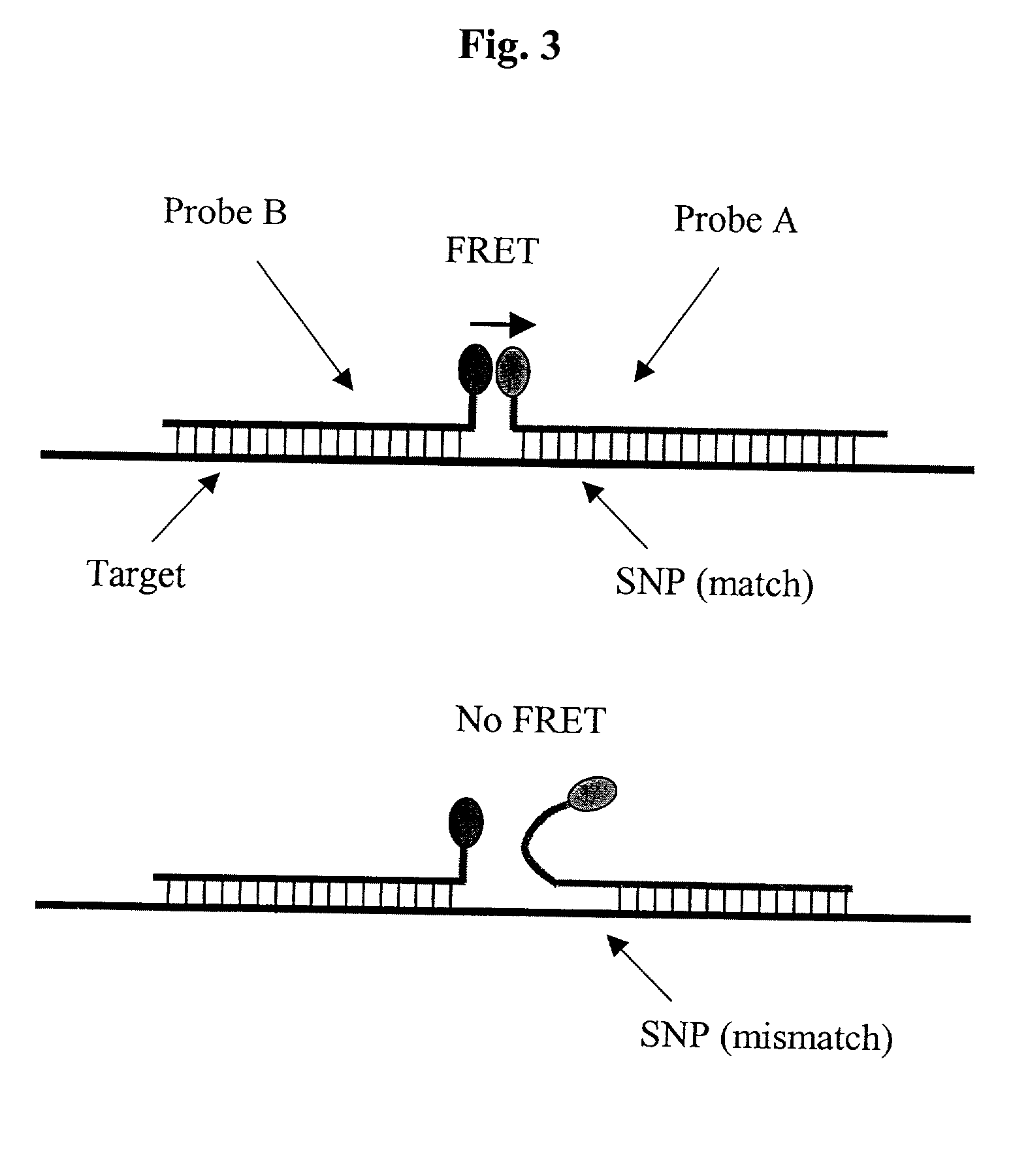Pairs of nucleic acid probes with interactive signaling moieties and nucleic acid probes with enhanced hybridization efficiency and specificity
a technology signaling moieties, which is applied in the field of pairs of nucleic acid probes with interactive signaling moieties and nucleic acid probes with enhanced hybridization efficiency and specificity, can solve the problems of difficult to adapt to studies involving thousands of snps, enzymatic steps that are costly, and the current genotyping method entails considerable effort in probe optimization or involves costly enzymatic steps
- Summary
- Abstract
- Description
- Claims
- Application Information
AI Technical Summary
Benefits of technology
Problems solved by technology
Method used
Image
Examples
example 1
Liquid Phase Hybridization of a FRET Probe Pair to a Target and Detection of Interaction Between the Probes
[0116] A real-time PCR system from ABI (ABI 7700) was used to assess the interaction between a FRET probe pair. One probe in the probe pair (contained a FITC label at the 5' end. A set of probes containing a Dabcyl quencher molecule at the 3' end (FIG. 6) constituted the other probe of the probe pair. Probes in this set varied in distance from the FITC label when the probe pairs were hybridized to a target, thereby placing the Dabcyl quencher 0, 1, 2, 3, 6, or 9 bases away from the FITC molecule, or by placement of a mismatch at varying distances from the Dabcyl molecule (FIG. 6).
[0117] When equimolar amounts of the FITC probe and a 70-mer target were mixed with an excess amount of one of the quencher probes from the above-mentioned set, and the mixture subjected to heat-denaturing and cooling cycles, the quenching of the FITC signal was affected by the distance between the FIT...
PUM
| Property | Measurement | Unit |
|---|---|---|
| thickness | aaaaa | aaaaa |
| Tm | aaaaa | aaaaa |
| temperature | aaaaa | aaaaa |
Abstract
Description
Claims
Application Information
 Login to View More
Login to View More - R&D
- Intellectual Property
- Life Sciences
- Materials
- Tech Scout
- Unparalleled Data Quality
- Higher Quality Content
- 60% Fewer Hallucinations
Browse by: Latest US Patents, China's latest patents, Technical Efficacy Thesaurus, Application Domain, Technology Topic, Popular Technical Reports.
© 2025 PatSnap. All rights reserved.Legal|Privacy policy|Modern Slavery Act Transparency Statement|Sitemap|About US| Contact US: help@patsnap.com



